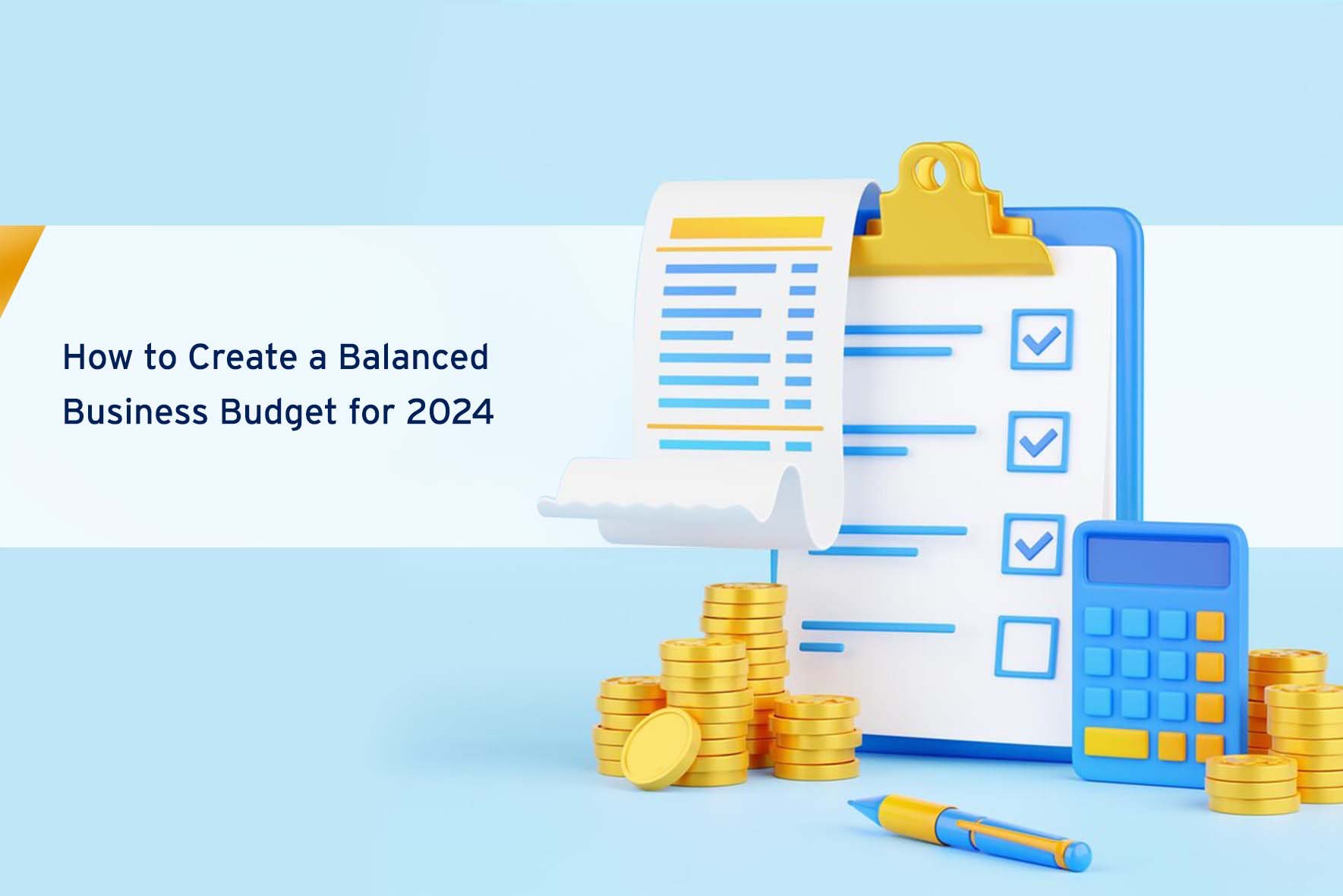
How to Create a Balanced Business Budget for 2024
As we enter 2023 still facing economic uncertainty, creating a realistic and forward-thinking budget is crucial for business success in the coming year. With cautious GDP growth predictions and fluctuating interest rates, understanding your numbers will be key to navigating the financial landscape in 2024.
This blog post will explore the fundamentals of business budgeting—from definitions to step-by-step methods—to set you up for stability and growth amidst an evolving economic climate. Aligning budget goals with overall business strategy, accurately projecting revenue and costs, and planning for contingencies will give your company the financial clarity needed to thrive in 2024 and beyond.
Understanding the Basics of Business Budgeting
Before diving into the details, let's review some budgeting basics. A business budget is simply a forecast of future revenue and expenditure over a set timeframe – usually annually or quarterly. The main purpose is to allocate financial resources efficiently to support company operations and strategic objectives.
Unlike personal budgeting, business budgets focus heavily on managing cash flow to meet short-term financial obligations while working towards long-term profitability goals. There is also greater emphasis on tying budget allocations to core business activities and measuring return on investment.
Step-by-Step Guide to Creating Your 2024 Business Budget
Now, let's explore the key steps to develop a balanced financial plan for next year:
1. Reviewing Past Financial Performance
Start by analyzing previous budgets and actual income and spending totals. Identify areas that over or underperformed. Review expense categories to see where cuts can be made. Understanding what worked and what didn't is key to improving future budget accuracy.
2. Setting Clear Financial Goals and Objectives
Define specific, measurable targets for 2024 based on broader business strategy – e.g. 10% sales growth, 7% increase in market share. This ensures alignment between budget allocations and core activities that drive growth.
3. Calculating Projected Revenue
Accurately forecasting top-line revenue is critical. Analyze past sales data, market trends, and growth opportunities to set realistic targets by product line or revenue streams. Remember to base projections on historical performance.
4. Categorizing and Estimating Expenses
Group expenses into fixed and variable costs. Fixed remain unchanged irrespective of output e.g. rent. Variables change depending on production volume e.g. materials. Analyze past expenditure, account for inflation, anticipated growth, and market conditions to estimate accurate future costs across all categories.
5. Resource Allocation & Prioritization
With projections set, strategically allocate funds across business units to drive growth. Prioritize key activities and high ROI projects. Assign resources keeping end-goals in mind.
Incorporating Stakeholder Input
Getting buy-in from key stakeholders across departments is crucial for budget success. Schedule meetings with department heads in finance, sales, marketing, HR, R&D etc. to discuss goals, surface priorities, and gather projections. This gives visibility into ground-level targets and resource needs.
Consolidate inputs into overall company budget, highlighting areas of overlap and gaps. Schedule follow-ups to align on final numbers. This drives engagement, ensures nothing is overlooked, and secures organization-wide commitment right from planning through execution.
Embracing Technology in Budgeting
Budgeting software and analytics tools like NetSuite, Adaptive, Vena can prove invaluable. Features like customizable reporting, scenario modeling, variance analysis, and data integrations make it easier to develop, manage, and track budgets. Dashboards centralize key metrics allowing for rapid decision making.
Automated processes like connecting expenses directly with bills, use of AR/AP subsystems etc. significantly cut down manual work. Advanced analytics provide greater insight into past performance and emerging trends from external data sources. This boosts speed, productivity and accuracy across the budgeting value chain.
Planning for Contingencies
Allocating contingency funds allows businesses to plan for and quickly respond to black swan events. 5-10% of total budget as reserve capital enables stability in times of crisis. For example, during onset of the pandemic many organizations relied on contingency funds to offset losses stemming from lockdowns.
Simulate financial models under different scenarios to quantify exposure – e.g. 20% supply chain disruption. This determines contingency fund requirements. Having preemptive strategies in place and capital reserves to fuel them lends businesses crucial agility against market upheavals.
Training and Upskilling for Budget Management
Annual technology budgets must allocate resources for adopting new systems and upskilling staff. Employees directly involved in budget management should receive extensive hands-on training on new tools/methodologies adopted. Include sessions on updated processes, regular progress reviews, troubleshooting etc.
Develop online training content and resources for wider teams to learn budgeting basics relevant to their roles. For example, modules on aligning departmental spend and goals with centralized budgets. This ensures smooth adoption and maximizes ROI on new technology investments.
Regular Monitoring and Review
Schedule monthly/quarterly reviews of budget vs actuals. Set KPIs like variance limits, burn rates etc. for continuous monitoring through analytics dashboards. This allows for rapid corrective actions – e.g. reallocating excess funds from an under-utilized department to propel growth elsewhere.
Conduct exhaustive annual budget reviews. Analyze performance by business unit/category. Identity successes and areas for improvement to carry forward into next year's planning. Budgeting must evolve constantly to remain reflective of ground realities.
Advanced Budgeting Strategies
Zero-based budgeting starts planning from scratch each new cycle, unlike traditional incremental models. It entails rigorously justifying all expenses – forcing teams to identify fat. This results in optimized, lean budgets tightly aligned with changing needs.
Top-down budgeting begins with senior leadership setting goals and allocating lumpsums to business units which then assign to departments. Bottom-up begins at department levels and consolidates up. Blending both by guiding divisions through top-down targets while gathering bottom-up inputs often works best.
Finalizing and Implementing the Business Budget
Once all inputs are gathered and contingency scenarios tested, finance compiles an integrated annual budget. Lock down final numbers, secure leadership sign-off and cascade down through org charts with allocated totals broken by departments.
Implementation success requires clear communication of responsibilities, spending guidelines and consequences of overages. Automate workflows between procurement, accounting etc. to embed budget discipline. Monthly reviews, strict audits and prohibition of unauthorized overspend are best practices to realize targets.
Conclusion
An accurate annual budget is indispensable for achieving financial targets amidst economic fluctuations. This post has covered fundamental concepts and step-by-step methods to develop a balanced business budget for 2024. Maintaining contingency funds, leveraging technology, securing stakeholder buy-in, and continuously monitoring performance will setup your company for sustained growth despite market uncertainties.
What key takeaways from this article will you incorporate into your 2024 planning? Share your thoughts and queries in the comments section. Make sure to visit nairaCompare for more content like this!
Want more content like this? Sign Up on nairaCompare
About Author





